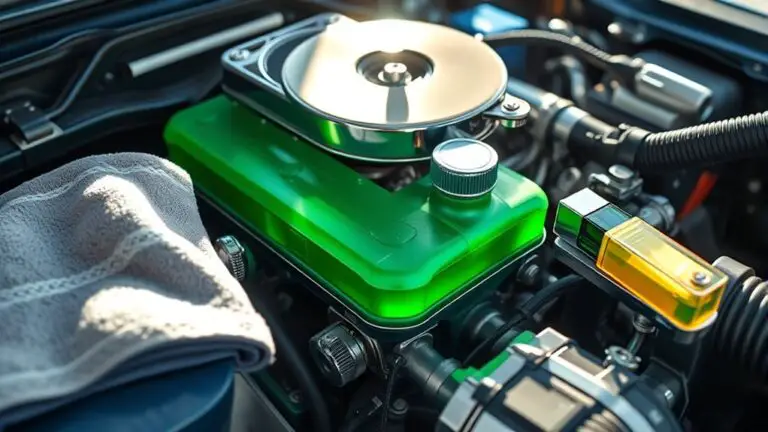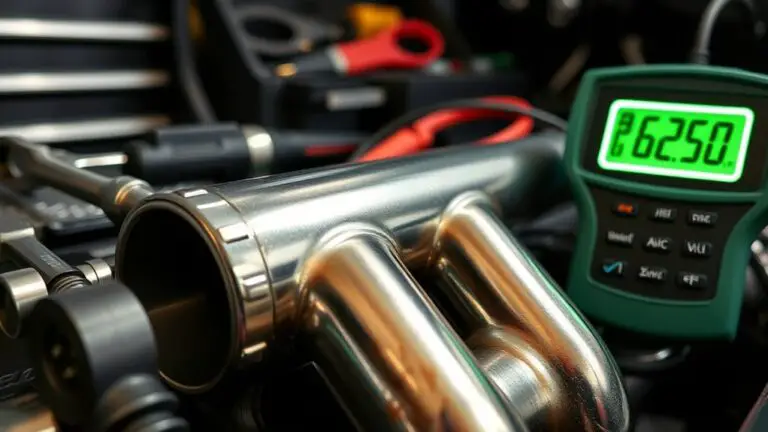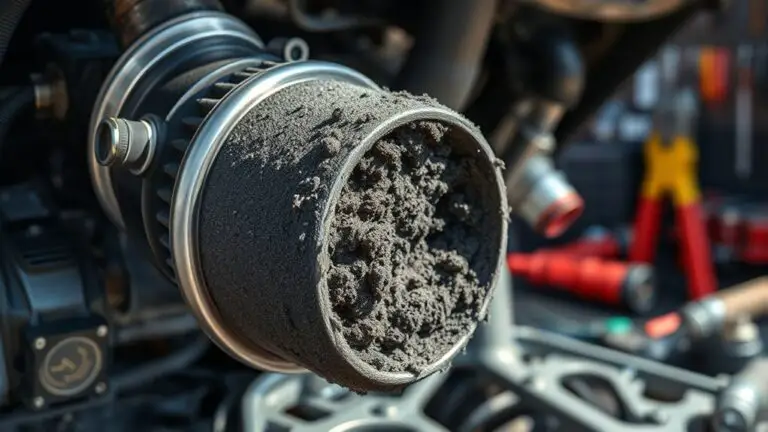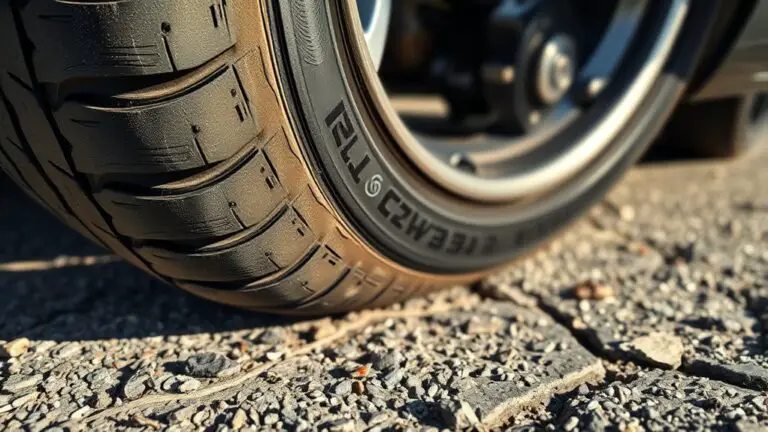Step-By-Step: Diagnosing Weak Airflow in Your Sedan AC
If your sedan’s AC pushes weak air, start with quick safety checks: turn the car off, PPE ready, and inspect for loose wiring or obvious leaks. Inspect the cabin air filter for blockage or mold, then test the blower motor at all speeds and listen for performance changes. Check ducts and blend doors for obstructions or misalignment, and verify seals. If issues persist, you’ll uncover more steps that could fix or identify the root cause. Continue for deeper diagnostics.
Causes of Weak Airflow in a Sedan AC

Weak airflow in a sedan AC can stem from several common causes, including a clogged cabin filter, a failing blower motor or resistor, and restricted air intake or ductwork. You’ll want to verify each element quickly and objectively. Common problems often begin with the filter: inspect for dirt, debris, or saturation and replace if needed. Next, test the blower motor and resistor by cycling speeds; a non-responsive or intermittently functioning control path signals replacement is warranted. Restricted air intake can come from blocked grilles, a deformed duct, or debris buildup in the intake path—clear obstructions and reseal joints to restore unrestricted flow. Leaks in the ductwork or loose connections reduce pressure and create weak airflow, so check seams and clamps for tightness and integrity. By isolating these airflow issues, you’ll locate the root cause faster and regain efficient cooling without unnecessary parts replacement.
Quick Safety Checks Before You Start

Before you start diagnosing, gather basic PPE like gloves and eye protection, and verify the vehicle is off with the ignition key removed. Check that you know the system shutoff steps so you can safely disconnect power if needed. This quick prep keeps you ready to handle any unexpected issues without exposing yourself to risk.
Prep Safety Gear
To prep safety gear, start with a quick risk check: verify you have safety glasses, gloves, and hearing protection, and guarantee all tools are in good condition. You’ll proceed with minimal risk if goggles and gloves fit well and hearing plugs or earmuffs seal properly. Keep safety goggles ready to protect against debris and splashes, and choose work gloves rated for grip and cut resistance to handle components without slips. Inspect all hand tools for burrs, cracks, and corrosion; discard anything damaged. Confirm the work area is clear of trip hazards and that lighting is adequate. Label emergency stops within reach, and have a fire extinguisher accessible. This prep removes surprises and keeps your focus on precise diagnostics.
System Shutoff Steps
System shutoff is the first step to a safe diagnostic. Before touching components, you verify power is off and key fuses are protected. Disconnect the battery negative for 30 seconds and verify capacitors discharge. Next, confirm the ignition is off and the vehicle isn’t in accessory mode. Wear gloves and eye protection, then isolate the HVAC fuse to prevent unexpected operation. Perform a quick visual scan for signs of damage, leaks, or loose wiring. Use the table below as a quick emotion-evoking checklist that guides you toward calm, confident system maintenance and airflow improvement.
| Safety Check | Outcome |
|---|---|
| Power off and fuse removal | Power verified |
| Battery disconnect | Stored energy neutralized |
| Visual inspection | Visible faults spotted |
| Wire and connector check | Secure, clean connections |
| Climate system wait | System ready for diagnostics |
Inspecting the Cabin Air Filter
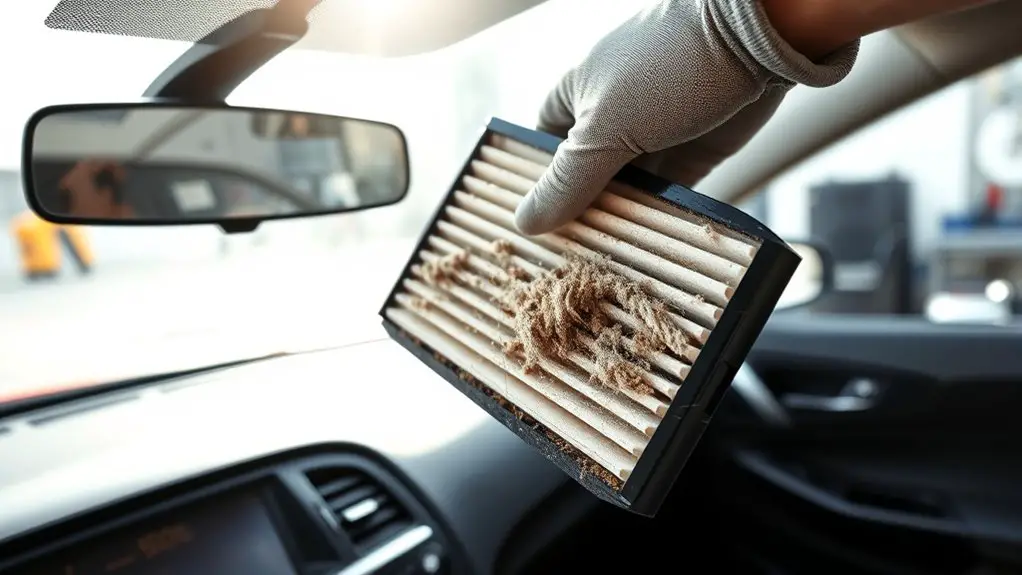
Inspecting the cabin air filter is a quick, essential step when diagnosing weak airflow. You’ll want to locate the filter housing—often behind the glove box or under the dashboard—and remove the access panel. With the engine off, inspect the filter for visible debris, excessive dust, or mold. A bright, darkly stained filter indicates blockage or contamination that restricts airflow and can worsen air quality.
Compare the filter to a clean reference: if you see dim, compact material or debris woven through the pleats, replace rather than reuse. Note the filter type (panel vs. cylindrical) and directional arrows to guarantee correct orientation during reinstallation. When you replace, choose a filter rated for the vehicle’s airflow demands and consider a higher-efficiency option if you frequently operate in dusty areas.
Reinstall securely, reconnect any cables or clips, and reset the cabin air settings if applicable. After replacement, test airflow at different speeds to confirm improved volume and consistent delivery, and monitor air quality for any residual odors or contaminants.
Checking the Blower Motor and Resistors
If the cabin still isn’t delivering adequate airflow after replacing the filter, the blower motor and its resistors are the next likely culprits. Start with a direct inspection: listen for the blower unit running at all speeds, and note any intermittent operation. Noisy or failing operation often points to the motor brushes or bearings wearing out. Proceed to resistor testing by measuring voltage across the blower motor circuits at multiple speed settings; erratic readings or complete loss at certain positions indicate a faulty resistor pack. Check fuses and the wiring harness for corrosion, loose connectors, or melted insulation, since a poor connection masquerades as a motor issue. When the blower fails to engage on higher settings but behaves on low, suspect the resistor pack. If the motor spins freely by hand but stalls under load, the motor needs replacement. Document symptoms, verify with a controlled bench test, and replace components as a matched pair to restore full airflow quickly.
Assessing the HVAC Blend Door and Ducts
When diagnosing airflow issues after confirming the blower and ducts, focus on the blend door and associated linkages. You’ll assess whether the blend door moves smoothly between hot and cold paths and whether its actuator or cables respond promptly to control inputs. Look for stuck or binding movement, misalignment, or worn linkage that prevents full travel. If the door binds, you’ll hear resistance or feel unusual throttling at mid-range settings. Inspect the housing for cracks or debris that could jam the door or alter its travel range. Confirm the vacuum or electric signal reaches the actuator reliably, since a weak signal can mimic a stuck door. Evaluate ductwork integrity as well: collapsed, disconnected, or kinked ducts reduce flow and create leaks that bypass the intended path. Correct operation hinges on clean, predictable movement, and a sealed air path. Maintain proper blend door operation and ductwork integrity for consistent climate control.
Evaluating the AC System Pressure and Refrigerant
After confirming the blend door and duct integrity, the next focus is checking the system’s pressures and refrigerant levels to verify proper cooling performance. You’ll use pressure gauges to verify both high- and low-side values against factory specs for your vehicle. If readings diverge, you’re looking at potential overcharge, undercharge, or a leak. Document ambient temperature and engine RPM to contextualize numbers, then compare against service manuals or schematic charts. When diagnosing refrigerant issues, awareness of refrigerant types is essential because different systems use specific blends that affect pressure targets and compressor load. Do not assume a single value applies universally. If pressures look abnormal, isolate the system and inspect for moisture, contaminated oil, or degraded seals. Charging, evacuating, or reclaiming should follow proper safety and environmental procedures. Ascertain you’re equipped with the correct refrigerant type and compatible canister, and recheck pressures after a safe recovery and stabilization period.
Sensor and Electrical Troubleshooting
Even with solid mechanical flow, faulty sensors or wiring can mask true airflow issues; start by inspecting the HVAC control signals, sensor grounds, and harness integrity for corrosion, chafing, or loose connections before testing actuator and switch inputs. You’ll want to verify that temperature and blend sensors report realistic values and that their signals align with the control module expectations. Next, trace electrical connections from the climate control unit to the blower and damper actuators, looking for corrosion, damaged insulation, or loose pins. A sensor malfunction can skew perceived airflow, prompting the system to overcompensate or under-respond. Use a multimeter to confirm proper voltage rails, ground continuity, and connector pin continuity under load. If you detect intermittent connectivity, reseat or replace affected plugs and recheck readings. Document any discrepancies between commanded and actual outputs to isolate faulty inputs. Remember, clean, secure electrical connections underpin accurate control and consistent airflow performance.
Simple DIY Fixes You Can Try at Home
Start with the cabin filter: inspect for clogging, replace if dirty to restore airflow. Next, check the vent ducts for kinks or blockages and clear any obstructions you find. These quick checks can pinpoint airflow loss before moving to more advanced diagnostics.
Check Cabin Filter
A clogged cabin air filter is a common culprit behind weak airflow, and inspecting it is a quick DIY fix you can perform at home. You’ll locate the cabin filter access door, usually behind the glove box or under the dash, then remove the cover to reveal the filter. Check for excessive dust, debris, or staining—dark, musty odors indicate replacement is needed. If your vehicle uses a rectangular, pleated design, note the airflow direction arrows before removal. Clean the surrounding housing with a dry cloth to prevent loose particles from reentering the system. Perform cabin filter maintenance by replacing the element if it’s dirty or damaged. Follow filter replacement tips from your manual, ensuring a snug seal. This small effort improves airflow, efficiency, and overall comfort.
Inspect Vent Ducts
If you’re noticing weak or inconsistent airflow after checking the filter, inspect the vent ducts for blockages or leaks. You’ll want to follow a focused, methodical approach. Start with a visual scan of accessible ducts behind panels, noting obvious dents, loose connections, or debris. Use a flashlight to check for crushed sections and entry points for pests. For blockages, carefully remove loose debris from bends and joints, avoiding tight squeezing that could stress the duct work. If you detect leaks, seal with appropriate foil-backed tape or clamps, then recheck pressure. Consider vent duct cleaning as a longer-term measure to maintain consistent airflow. Pair these checks with airflow testing to verify performance improvements and confirm the system isn’t losing conditioned air through the ducts.
When to Seek Professional Help
When symptoms persist after simple checks, it’s time to seek professional help. You’ll want an objective assessment to confirm airflow faults, refrigerant concerns, or electrical faults beyond routine inspection. A pro can diagnose root causes quickly, preventing wasted parts and ongoing discomfort. Expect a precise report and actionable fixes, not guesswork.
When symptoms persist after simple checks, seek professional help for an objective diagnosis and actionable fixes.
- signs needing assistance: persistent weak flow, unusual noises, or electrical smells
- benefits professional service: accurate diagnosis, proper refrigerant handling, and safe system recharge
- signs needing assistance: compressor cycling, blown fuses, or blower motor hesitation
- benefits professional service: warranty-compliant repairs and documented diagnostics for future maintenance
Know when to act: if performance doesn’t improve after a targeted cleaning, or you notice heat or humidity spikes, seek help promptly. You value freedom, so rely on trained technicians to restore reliable climate control with minimal downtime and clear, verifiable results.
Frequently Asked Questions
Can Environmental Temperature Affect Perceived Airflow in a Sedan?
Yes, temperature affects perceived airflow. When it’s hot, you feel stronger air due to convective sensation, while cold air can seem weaker even if the system runs the same. Temperature impact alters air density and viscosity, influencing nozzle feel and velocity perception. You’ll notice changes in cabin cooling efficiency as outdoor temps shift. In practice, monitor airflow alongside cabin temperature, ensuring ducts, filters, and vents aren’t restricting flow.
Will Using Recirculated Air Help or Worsen Airflow Flow?
Using recirculated air can improve cooling efficiency and airflow in a sedan, but it may reduce cabin ventilation over time. So, it benefits you for rapid cooling yet drawbacks include higher humidity and buildup of pollutants if used long-term. If you’re chasing steady airflow, start with fresh air to reset filters, then switch to recirculated air benefits briefly. Avoid prolonged use; balance keeps performance and comfort.
Do Blower Motor Noises Indicate Airflow Problems or Mirrors?
Blower motor noises don’t resemble mirrors; they signal airflow problems, not reflections. If you hear grinding, whirring, or rattling, inspect the blower assembly and bearings, as the blower motor may be failing. A failing blower reduces airflow and can mask performance elsewhere. Check for obstructions, fuse or resistor issues, and duct leaks. If noises persist, service promptly to prevent further airflow problems and keep your system free to breathe.
Can Damaged HVAC Duct Seals Cause Reduced Airflow?
Yes, damaged HVAC duct seals can reduce airflow. When duct seal integrity is compromised, leaks steal conditioned air, lowering airflow efficiency and making you work harder to reach the desired cabin temperature. You’ll notice weak or inconsistent airflow from vents. Inspect for gaps, cracks, or loose connections and repair promptly. Prioritize airtight seals to maintain proper airflow, prevent energy loss, and keep your system cooling effectively with consistent airflow efficiency.
How Often Should I Replace the Cabin Air Filter for Optimal Flow?
You should replace the cabin filter every 12,000 to 15,000 miles or once a year, whichever comes first. For peak flow, follow cabin filter maintenance guidelines and inspect the filter monthly for debris. If you drive in dusty areas or notice reduced airflow, shorten the replacement frequency. Regular filter replacement frequency supports efficient HVAC performance, reduces strain on the blower, and preserves cabin air quality for your freedom-loving ride.


